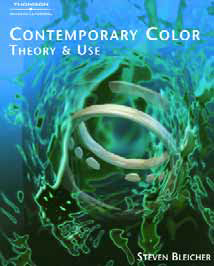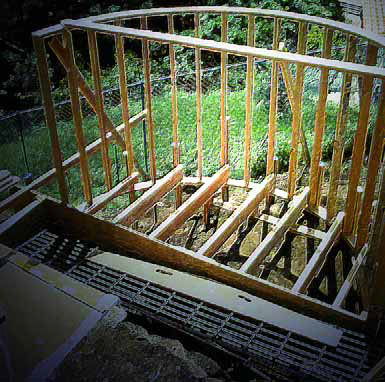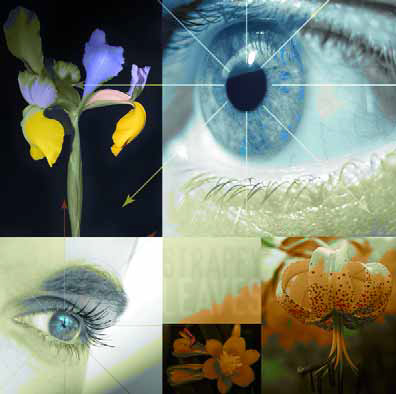WaterShapes
'I want the house to look as though it is floating on water." That was what architect Victor Canas told me when I was called out to visit this site on the northwestern coast of Costa Rica. It was a brilliant idea, certainly one that befitted the spectacular mountaintop setting and its breathtaking 360-degree views of rugged coastline, forest greenery and assorted perspectives to horizons in all directions. I had the advantage in this case of
This project was all about fun and finding ways to infuse watershapes and the overall landscape with childlike senses of playfulness and wonder. At a glance, of course, it's obvious that this particular approach wouldn't work for too many clients, but in this case, we were working with a woman who wanted her yard to express her love of color, her sense of humor and her unparalleled inclination toward the unusual. From our first meeting, I knew that this was someone who wouldn't settle for anything that even approached the ordinary. Maybe it was the 12-foot-tall fiberglass chicken she'd placed in her front yard or the life-size hippopotamus in the backyard or her wildly eclectic taste in art and interior furnishings or her fittingly off-beat
As part of my work on movies and television shows through the past dozen years, I've developed a range of special effects that focus specifically on fire. For the science fiction hit Men In Black, for example, I was charged with devising the flame-spewing weapons wielded by Tommy Lee Jones and Will Smith in a spectacular scene in which they shoot down a flying saucer. That system involved a range of safety issues along with devising a specially formulated fuel (alcohol mixed with various metals) to create blue flames as well as a combination of inert gases and electronic control systems that were used to extinguish the fire and protect the actors. As is the way with so much in Hollywood, an on-screen sequence that lasts just a couple of seconds took my team
Every once in a while, I run across an area of design theory or philosophy that is so fundamental that I'm left to wonder how I've been able to do what I do for a living without a complete understanding of it. Color theory is one such field of study. For a long time now, I've known that the factor that very often makes or breaks a project is not the price of the materials or the presence of bells and whistles, but rather how well the colors work, both with each other and in the context of the overall setting. Even simple projects with modestly priced materials can be ranked among the beautiful if the colors work. By the same token, there are extremely elaborate projects that fail to live up to their potential (or fail altogether) when color choices are off base. My sense that this was something I needed to know more about led me to
Every once in a while, I run across an area of design theory or philosophy that is so fundamental that I'm left to wonder how I've been able to do what I do for a living without a complete understanding of it. Color theory is one such field of study. For a long time now, I've known that the factor that very often makes or breaks a project is not the price of the materials or the presence of bells and whistles, but rather how well the colors work, both with each other and in the context of the overall setting. Even simple projects with modestly priced materials can be ranked among the beautiful if the colors work. By the same token, there are extremely elaborate projects that fail to live up to their potential (or fail altogether) when color choices are off base. My sense that this was something I needed to know more about led me to
One of the things I've referred to repeatedly through the years is my interest in quality forming for watershapes. I look at it this way: If the job is about creating quality reinforced-concrete structures, then precisely controlling their dimensions and contours stands at the very heart of the art and craft of watershaping. And all I'm recommending here is simply following the lead of the experts who install building foundations and structural walls by using completely rigid materials and support frameworks. To drive that point home, I want to discuss the forming of one specific detail - and define a right way of getting it done. One of my trademarks is the fact that I build many pools that are
One of the things I've referred to repeatedly through the years is my interest in quality forming for watershapes. I look at it this way: If the job is about creating quality reinforced-concrete structures, then precisely controlling their dimensions and contours stands at the very heart of the art and craft of watershaping. And all I'm recommending here is simply following the lead of the experts who install building foundations and structural walls by using completely rigid materials and support frameworks. To drive that point home, I want to discuss the forming of one specific detail - and define a right way of getting it done. One of my trademarks is the fact that I build many pools that are
Most of my clients don't know a Pittosporum from a Loropetalum - nor would I expect them to. Unfortunately, however, this often leaves me to describe plants to them, a process that often makes me feel like I'm reenacting that television commercial where the homeowner tries to mimic the creature seen crawling across the kitchen floor for an exterminator: I'll stand there with my arms up or out, attempting to look like the botanical specimen I'm suggesting for use in their garden. One of the easiest groups of plants to describe in this or any other way is a collection I call the strappy-leaf plants. I didn't make up the term, and I'm sure many of you have also used it yourselves to describe plants with foliage that looks like straps - generally long strips that emerge from a central clump and arc up, sometimes flopping over to create
Most of my clients don't know a Pittosporum from a Loropetalum - nor would I expect them to. Unfortunately, however, this often leaves me to describe plants to them, a process that often makes me feel like I'm reenacting that television commercial where the homeowner tries to mimic the creature seen crawling across the kitchen floor for an exterminator: I'll stand there with my arms up or out, attempting to look like the botanical specimen I'm suggesting for use in their garden. One of the easiest groups of plants to describe in this or any other way is a collection I call the strappy-leaf plants. I didn't make up the term, and I'm sure many of you have also used it yourselves to describe plants with foliage that looks like straps - generally long strips that emerge from a central clump and arc up, sometimes flopping over to create
Something inspired and inspiring is happening in the watershaping industry - something I doubt has ever really happened before: In almost every encounter I have with industry people lately (and believe me, I've seen a lot of you in the past few months), I get the palpable sense of a passion that is driving all of us in a process of creative and professional growth. I see it in the enthusiasm my fellow watershapers have for what they're doing, and I see it being directly translated into their projects and, perhaps most important, being conveyed to their clients and the attitudes everyone has about the results. From where I sit, this is a spectacular time to be in this business, and that notion has been reinforced countless times in the recent past. I received a concentrated dose of this broad impression during the



















